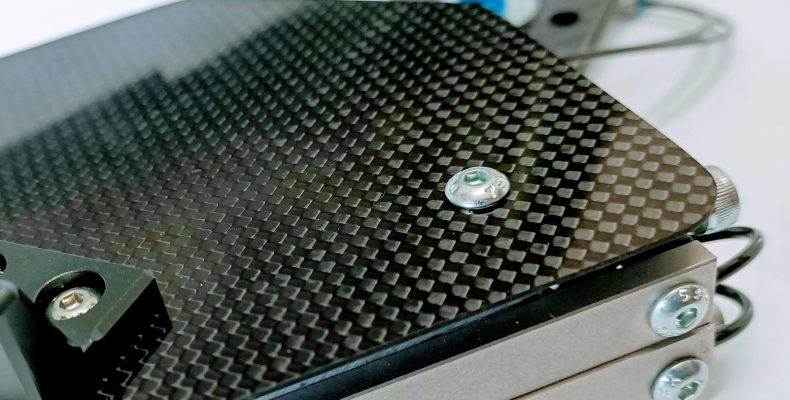New Cluster-member Darcan Engineering says its latest patent-pending technology shows significant potential to broaden the scope of parts made from high strength composites, as well as significantly slice production costs.
With a background in press knife applications, plastics and machine manufacture, Darcan has developed new concepts and methods on various projects suited to the carbon fibre industry in collaboration with fellow Cluster member Carbon Revolution.
Darcan’s Laminarc is a novel carbon fibre pre-forming system targeted at reducing the cost while increasing the production output of fibre composites.
Like all the best design ideas, Darcan says Laminarc is innovative but not complex.
“It’s quite a simple idea really, and could suit a wide range of applications,” head of Research & Development Cameron Rees tells the Cluster. “There are various other thermoforming technologies for fabrics but we are yet to see any that are done in this particular way.”
Mr Rees explains the method involves ways to loosely layer fabric and form it into a 3D shape in seconds, at low pressure and low temperatures, which reduces the cost of the production equipment required to make it.
Darcan, which has offices in Victoria’s Drouin, Queensland and Shenzhen, was founded by second generation machine builders who started with hands-on experience building such items as harvesting machines for tea, boronia and pyrethrum and general horticultural automation in Australia, Europe and America. They have experience across a broad spectrum of industries such as food, plastics, horticulture, construction and automotive.
MD Mark Williames was behind the Laminarc idea, which came out of a combination of Darcan’s history in thermo-forming plastics and researching current industry methods, which inspired the new way of thermo-forming carbon fibre.
“Our knowledge around that is quite developed and we are essentially applying it to a new area,” Mr Rees says. “The Cluster has been a great resource for connecting us with government, research groups and others in industry to help us develop this idea”
While improving the speed and cost of manufacture, the technology is intended also to control repeatability and strength through consistency in fibre length and alignment that other methods struggle to achieve.
After joining the Cluster, Darcan started working with Deakin University’s carbon fibre composites experts to help explore development of the idea. Darcan have also secured funding through the Federal Government’s Innovations Connection grant to support the collaboration/project.
The company is now undertaking a 12 months’ research project, backed by Deakin and Head of Composites, Professor Russell Varley, investigating and validating the process and the properties of the material formed in this way. The research aims to investigate mechanical performance and establish its range of applicability.
Mr Rees says Laminarc offers a general manufacturing application that could be applied to different composite products including fibreglass. Potential applications in automotive and consumer products are being explored and some local industry have shown interest in the project.
“There are a number of applications that we believe could be suited and we’ll be investigating these as we progress the project. Part of this is to understand the factors that affect part quality, manufacturing speed and part strength.
“We have quite a few ideas around what it could be applied to and working with Deakin, we hope to select a particular application for demonstration, and in the future launch a pilot production project” he says.
Darcan plans to manufacture test and component samples and conduct mechanical testing by mid-2021.
“We’ll be looking at real part test results to learn as much as possible about the process, with a view to developing our concepts for production and scoping future work,” Mr Rees says.
